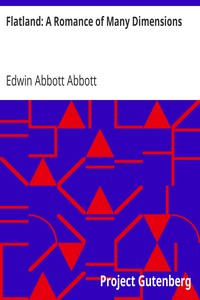| Summary |
"Flatland: A Romance of Many Dimensions" by Edwin Abbott Abbott is a satirical novella written in the late 19th century. The story unfolds in a two-dimensional world inhabited by geometric figures, primarily focusing on a Square who narrates his experiences and insights about life in Flatland, as well as his eventual encounter with concepts beyond his two-dimensional existence. The book explores themes of social hierarchy, the limitations of perception, and the challenges of understanding higher dimensions. The opening of "Flatland" introduces the reader to the peculiar world where inhabitants perceive reality as a flat plane, seeing only the straight-line outlines of one another. The Square, as the narrator, describes the nature of Flatland, emphasizing the lack of depth perception, which is pivotal to the social structure and norms upheld by its citizens. Furthermore, the Square illustrates how recognition among the inhabitants is complicated by their geometric forms; for example, individuals of different classes appear visually as indistinct lines. The stage is set for a critique of social conventions and the significant implications of dimensional awareness as the Square hints at the possibility of higher dimensions beyond his flattened upbringing. (This is an automatically generated summary.)
|

